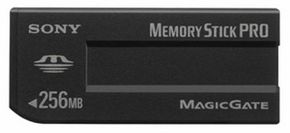CCD Camera Summary
It takes several steps for a digital camera to take a picture. Here's a review of what happens in a CCD camera, from beginning to end:
- You aim the camera at the subject and adjust the optical zoom to get closer or farther away.
- You press lightly on the shutter release.
- The camera automatically focuses on the subject and takes a reading of the available light.
- The camera sets the aperture and shutter speed for optimal exposure.
- You press the shutter release all the way.
- The camera resets the CCD and exposes it to the light, building up an electrical charge, until the shutter closes.
- The ADC measures the charge and creates a digital signal that represents the values of the charge at each pixel.
- A processor interpolates the data from the different pixels to create natural color. On many cameras, it is possible to see the output on the LCD at this stage.
- A processor may perform a preset level of compression on the data.
- The information is stored in some form of memory device (probably a Flash memory card).
Advertisement
Related Articles
- Digital Camera Quiz
- Digital Photography Basics
- How High-definition Camcorders Work
- How Cameras Work
- How Autofocus Cameras Work
- How Camera Flashes Work
- How Red-light Cameras Work
- How Photographic Film Works
- How Steadicams Work
- What are the best settings for e-mailing or printing pictures?
- Why are there so many different image formats on the Internet?
- Why are my digital photograph files so huge while photos on other Web sites are much smaller?
More Great Links
- Digital Camera Reviews and Stuff Guide
- Beginner's Photography Tips
- CCD vs. CMOS
- Image Resolution, Size and Compression
- Understanding Resolution
- Photo.net
Sources
- HP Digital Photography Center http://www.hp.ca/portal/hho/dpc/learn/future_film_photography.php
- Tech Digest http://www.techdigest.tv/digital_cameras/index.html
- Photo.Net: Digital Cameras - A Beginner's Guide http://www.photo.net/equipment/digital/basics/
- Photo.Net: Size Matters http://www.photo.net/equipment/digital/sensorsize/
- Vidlight.com: Introduction to Digital Photography http://www.vividlight.com/articles/3116.htm
- PC Magazine: Inside Track http://www.pcmag.com/article2/0,1759,1822946,00.asp
- Camera Resolution Chart http://www.bhphotovideo.com/bnh/controller/home?O=getpage.jsp&A=getpage&Q=Product_Resources/resolution_chart.jsp
